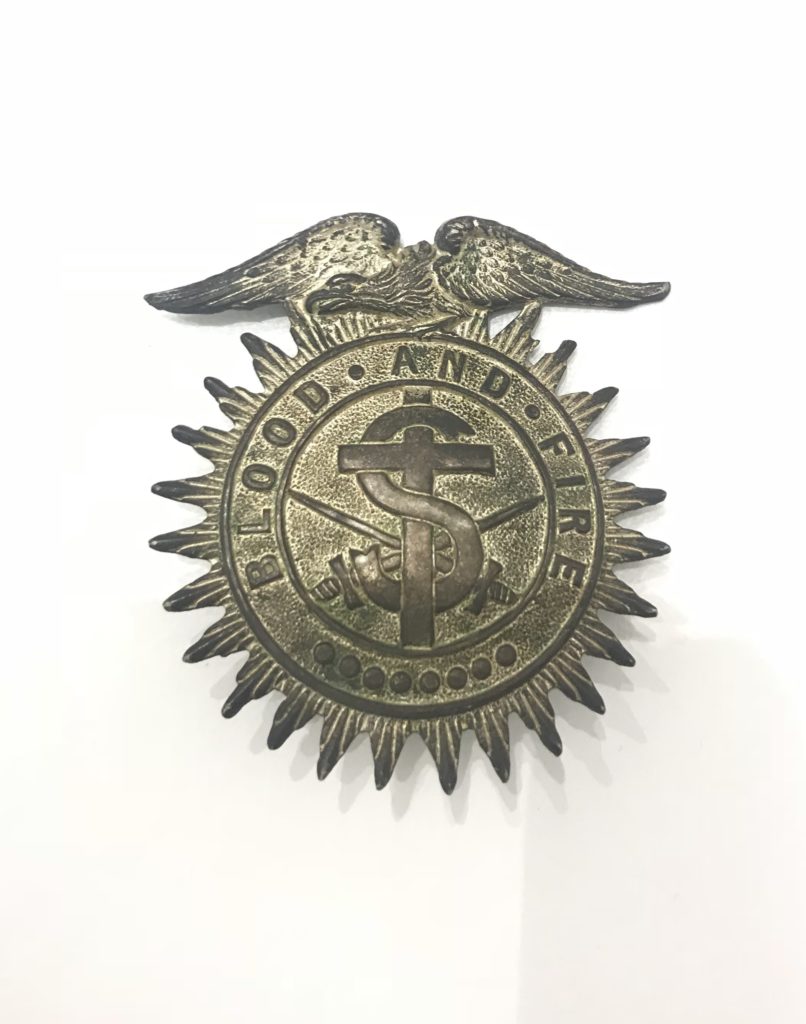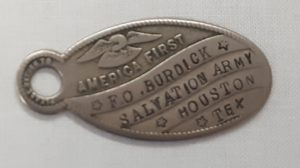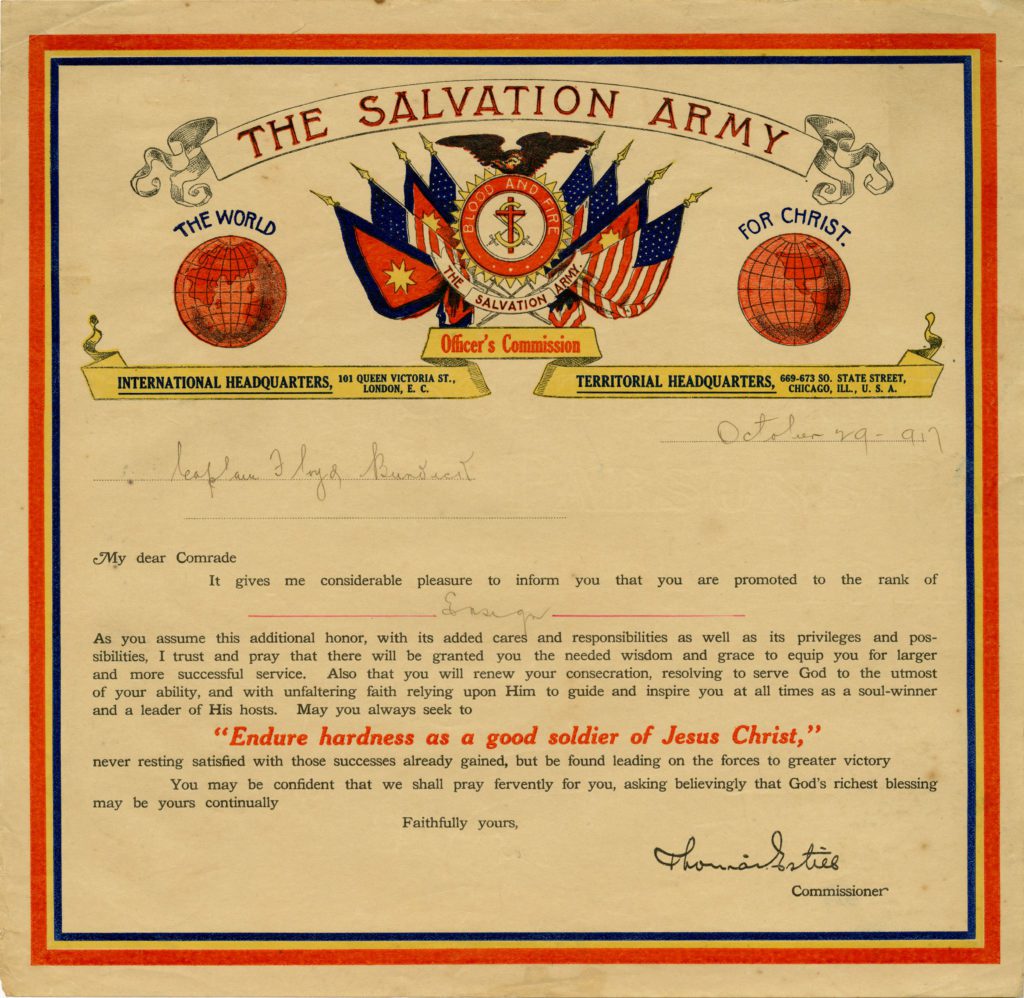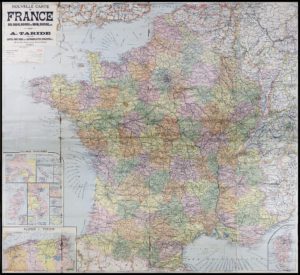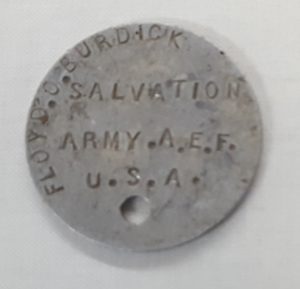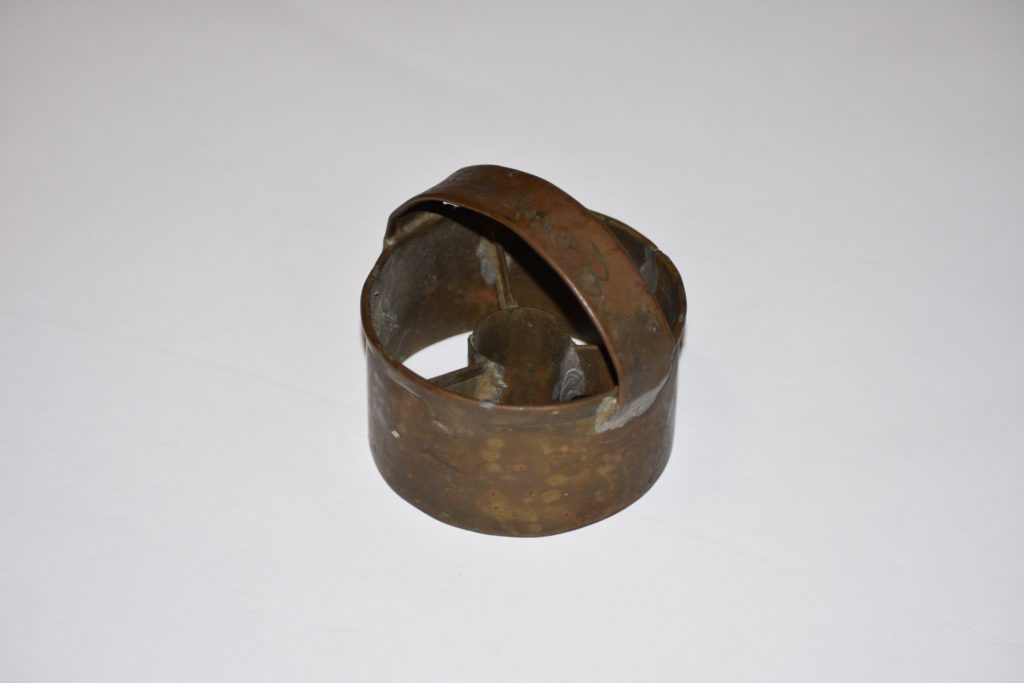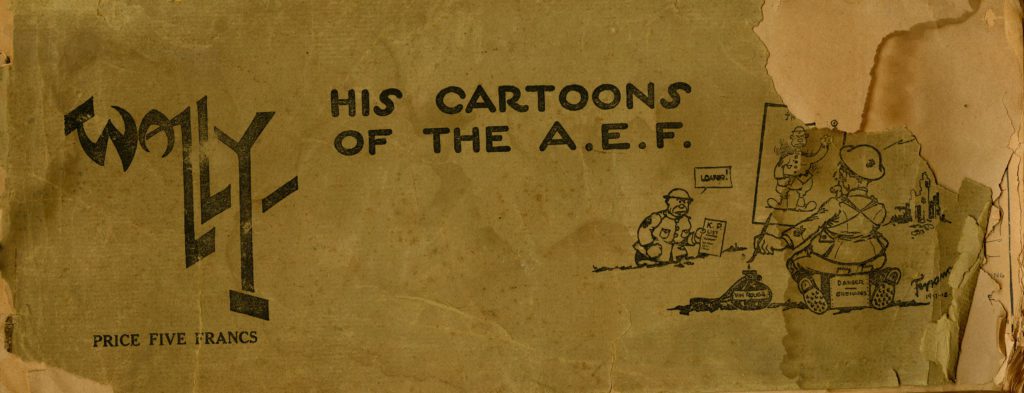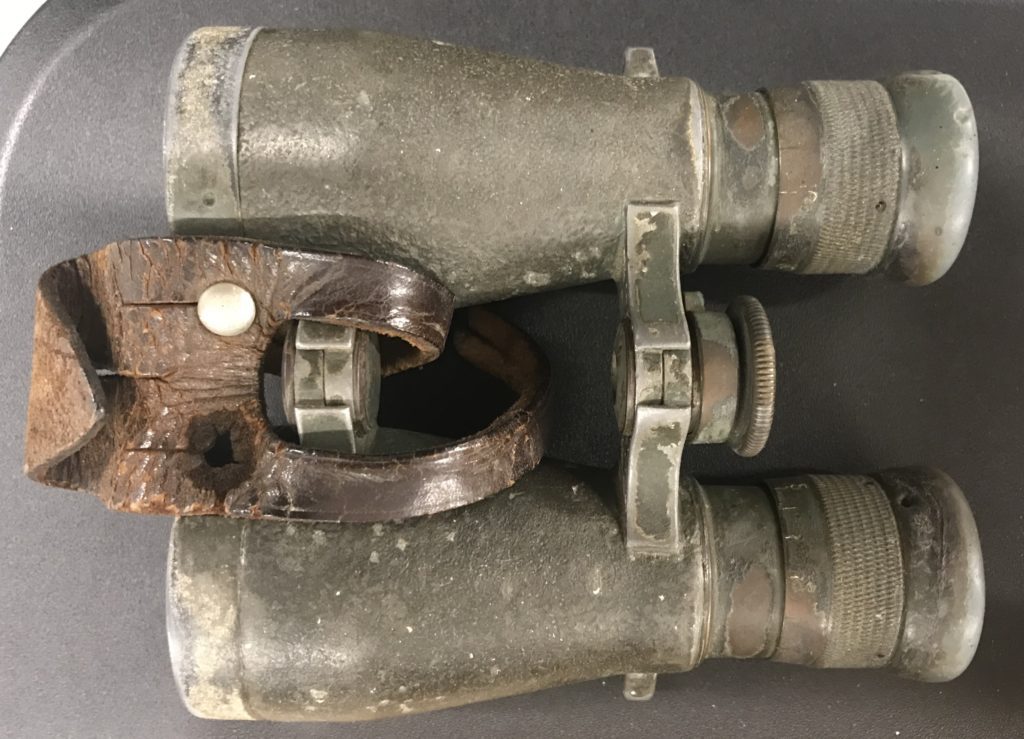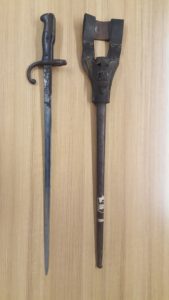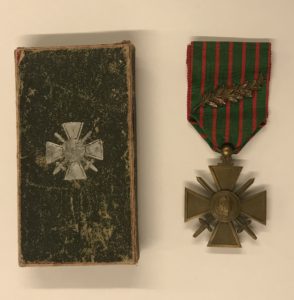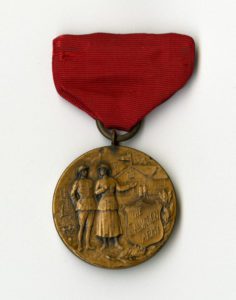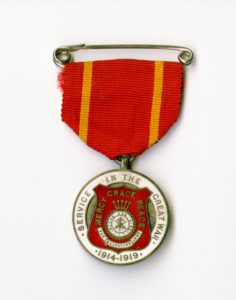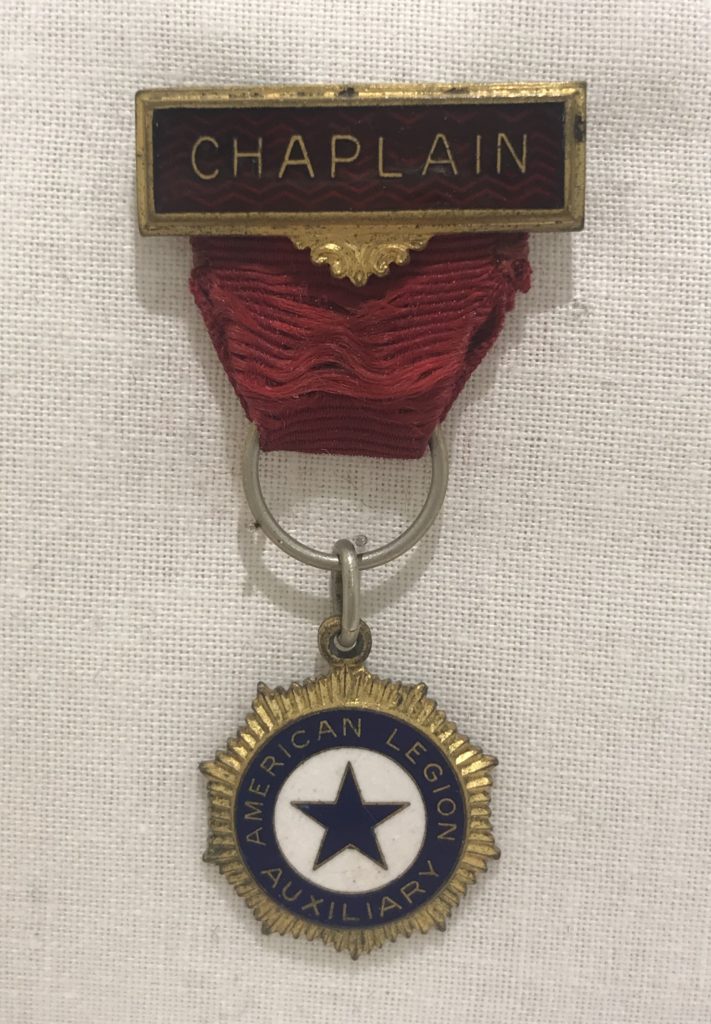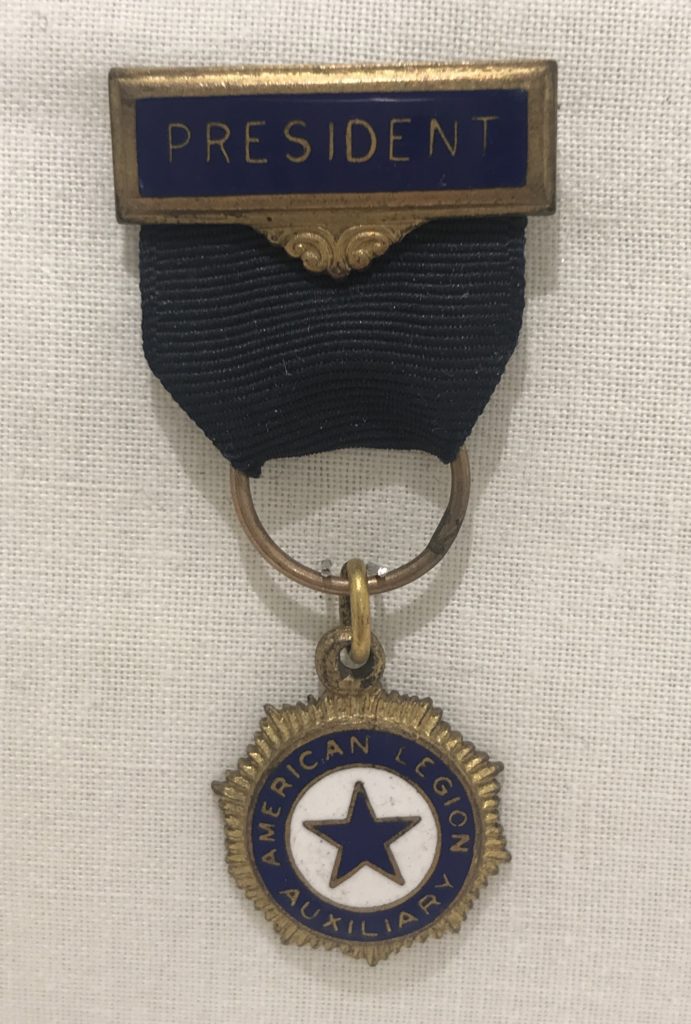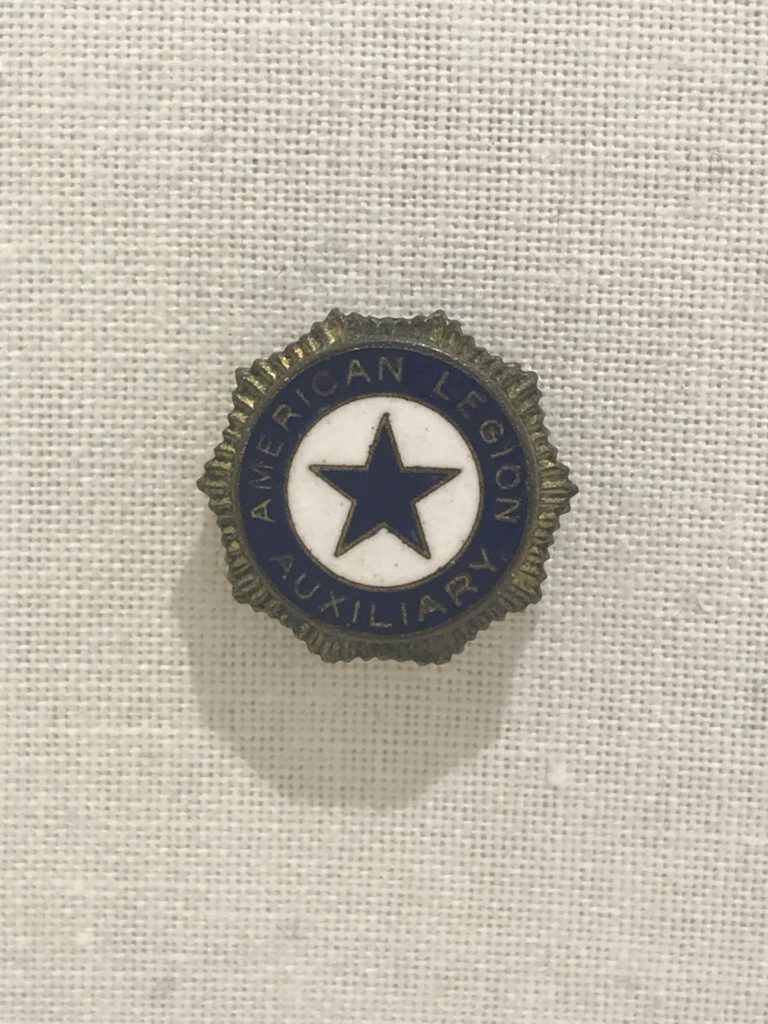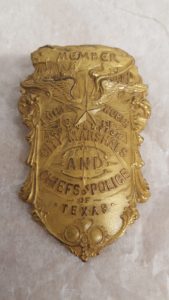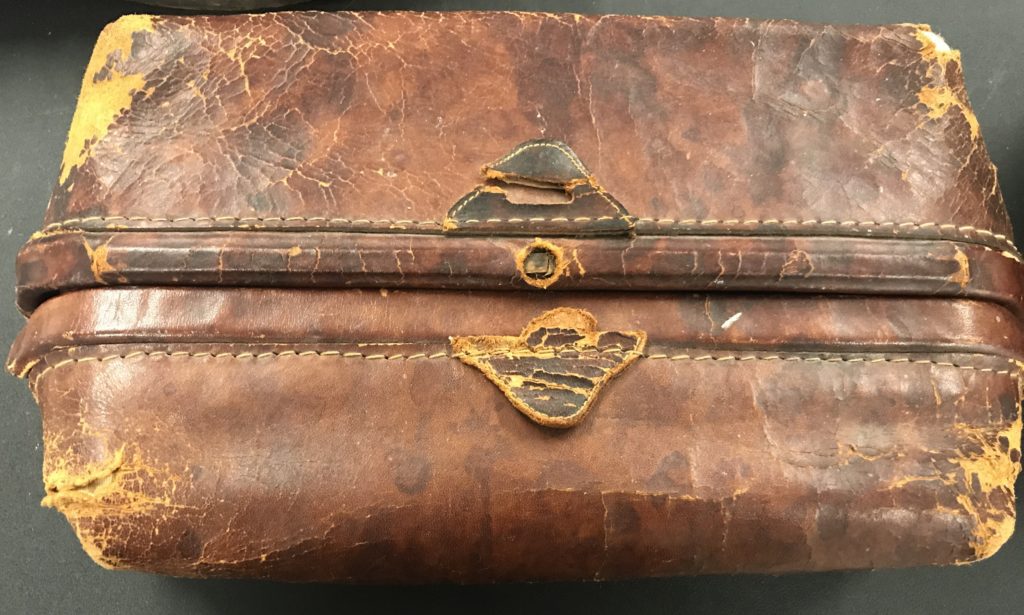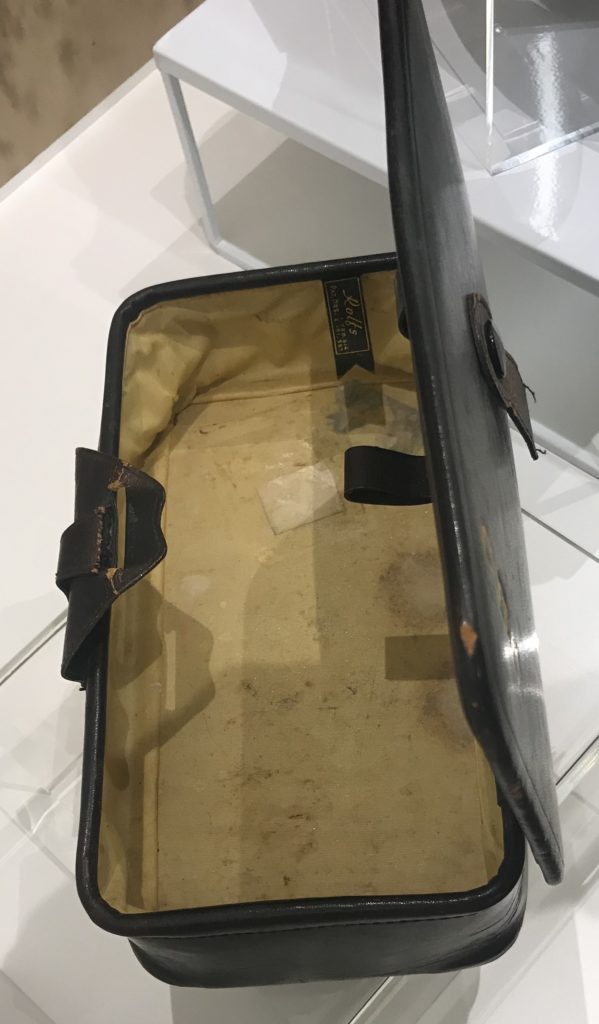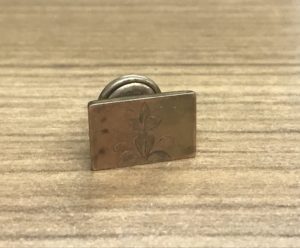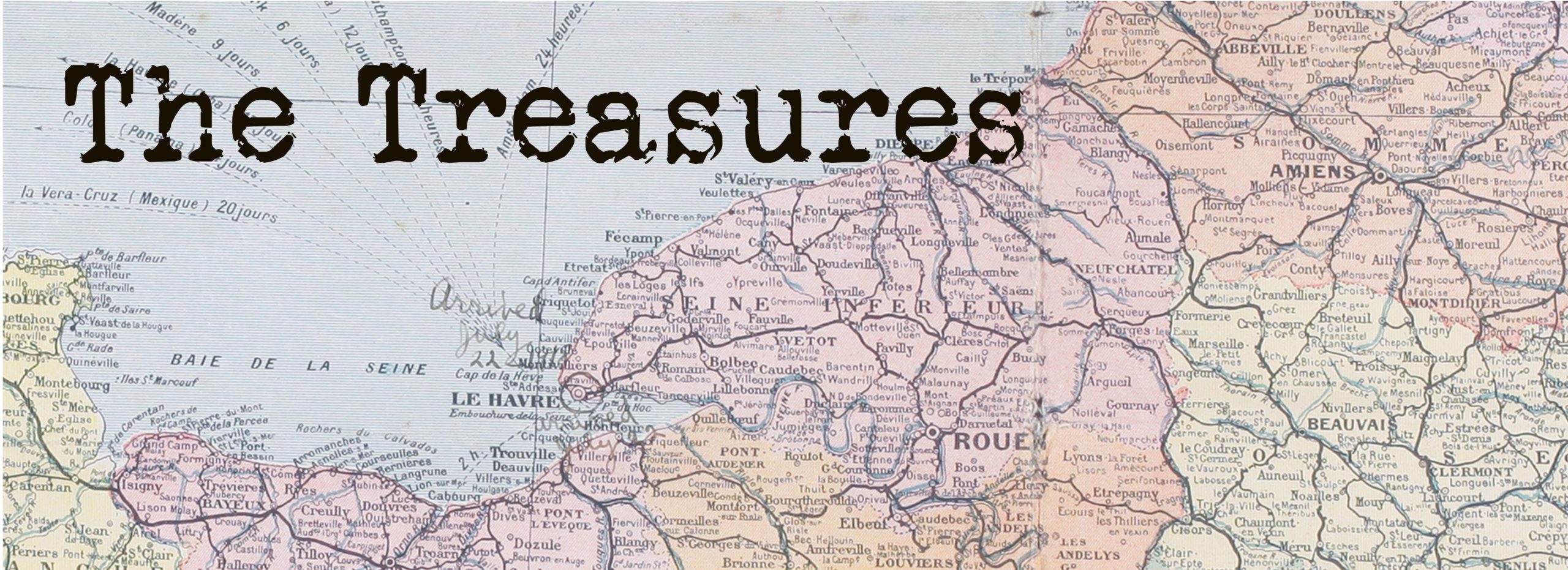
During the course of our lives, we all collect things. These mementos may be gifts from a special person, souvenirs from time abroad, or custom made family heirlooms. They are treasured possessions. Below is a sampling of those treasures handed down through generations of the Burdick family. Each one has a meaning attached, some we know and some are lost to time.
Use the buttons below to move between Burdick family treasures.
Today, the crown tops The Salvation Army Crest, but in America it wasn’t always so as shown by this man’s hat emblem. An 1884 schism in the American Salvation Army, related to incorporating under American laws, produced two Salvation Armies. The two groups were nearly identical, but all of the insignia were incorporated by the group led by Major Thomas E. Moore, which was not recognized by General William Booth. Moore’s group soon faded. Booth’s American Salvation Army now needed to differentiate its crest design and selected the eagle in reference to Isaiah 40:31. In 1976 it was learned that Moore’s rights had irrevocably expired and the crown topped crest was reinstated.
Private-purchase ID tags, like Pa’s on the right, were used by both military personnel and civilians to mark their luggage during the mid-1800s through the early 1900s. “America First,” which is stamped at the top of this ID tag, most likely refers to President Woodrow Wilson’s 1916 presidential campaign. Wilson used this slogan as an appeal to voters who did not want to get involved in the wars then occurring in Mexico and Europe.
Floyd and Minnie were promoted to rank of ensign just thirteen days before they were appointed to special work in France. This rank was used from 1888 until 1931 and fell between captain and adjutant. Ma also received an identical certificate which was donated to the collection at the same time. Their next promotion in rank, to adjutant, occurred on January 24, 1923.
Private Abian A. “Wally” Wallgren was a cartoonist for The Philadelphia Public Ledger and The Washington Post before serving during World War I. Continuing his work as an artist while in France, his cartoons were featured in every issue of the military newspaper The Stars and Stripes. Satirizing military life, army regulations and other subjects that he knew the boys on the front line would enjoy, these cartoons were wildly popular.
In 1919 his cartoons were pulled together into the collection Wally: His Cartoons of the A.E.F. published by The Stars and Stripes. The museum staff believes there is another Wallgren cartoon in its collection.
The “Fernglas 08” binoculars were used by the German infantry and were standard issue during World War I. On the inside of this case lid there are instructions written in German on how to care for the binoculars.
These binoculars were functional war souvenirs. Photos show Cecil holding binoculars which looks very similar to this pair. She recorded using binoculars to watch military engagements while serving in France.
This particular bayonet was designed to fit the French Model 1874 “Gras” Infantry Rifle. This model was manufactured from 1874 until around 1885, when the bayonet was no longer standard issue. While it was no longer officially issued, this would have been used at the beginning of World War I. The top edge of this bayonet’s blade reads, in French, “Mre d’Armes de St. Etienne Août 1880.” Translated into English, this means “Manufactured at the Armory at St. Etienne August 1880.”
The Croix de Guerre is a French military decoration created in 1915 to reward individual or group feats of bravery. The medal can be bestowed on any member of the armed forces, French citizens, and foreigners; each medal has different levels of distinction.
Ensign Minnie Burdick received this Croix de Guerre for “perseverance in baking pies and conducting gospel services under German shell fire.” The bronze palm you see attached to Ma Burdick’s medal designates a mention of her in an army-wide military dispatch. She was one of three Salvation Army War Service workers to receive this distinguished honor.
This US Salvation Army War Service Medal was designed for those Salvationists who served overseas during World War I.
The front side illustrates a male and female war relief worker, a Salvation Army hut, and The Salvation Army shield. The reverse states, “World War, For Heroic and Faithful Service To Captain C. Burdick, 1914 – 1919.” In all, 255 medals were struck and presented to U.S. Salvationists who served overseas.
Minnie Burdick served as the first National Chaplain of the American Legion Auxiliary from 1921-1924. During Minnie’s service, she lived by the American Legion Auxiliary’s purpose statement, “To express, by word and action, our founding principle of service to God and country.”
The position of National Chaplain has been important since the organizations’ inception. Chaplains are found at all levels of the organization, from the individual unit to the national level, and are called on to perform duties such as leading memorial services for fallen soldiers and offering prayers at events.
This commemorative badge belonged to Floyd Burdick and was made for the 17th annual City Marshals and Police Chiefs Union of Texas Convention, which was held in Fort Worth on May 17-19, 1911. The badge was used to identify convention participants, provide them with free transportation and also admit the wearer into free amusements.
In the early 1900s, German leather-goods designer Charles Doppelt created the toiletry bag, which he named the Dopp kit. Dopp kits became well known during World Wars I and II when they were issued to soldiers. The name became synonymous with toiletry bags and is still used today.
While the initial Dopp-brand kit had a specific design, these helpful leather bags were quickly made by multiple manufacturers and in various shapes, sizes and colors.
In the early 1900s, German leather-goods designer Charles Doppelt created the toiletry bag, which he named the Dopp kit. Dopp kits became well known during World Wars I and II when they were issued to soldiers. The name became synonymous with toiletry bags and is still used today.
While the initial Dopp-brand kit had a specific design, these helpful leather bags were quickly made by multiple manufacturers and in various shapes, sizes and colors. The bag with initials “C.B.G.” on the top dates to the 1940s or early 1950s and was produced by Dopp competitor Rolfs. It belonged to Cecil Burdick after she was married to Archie Goodwin.

